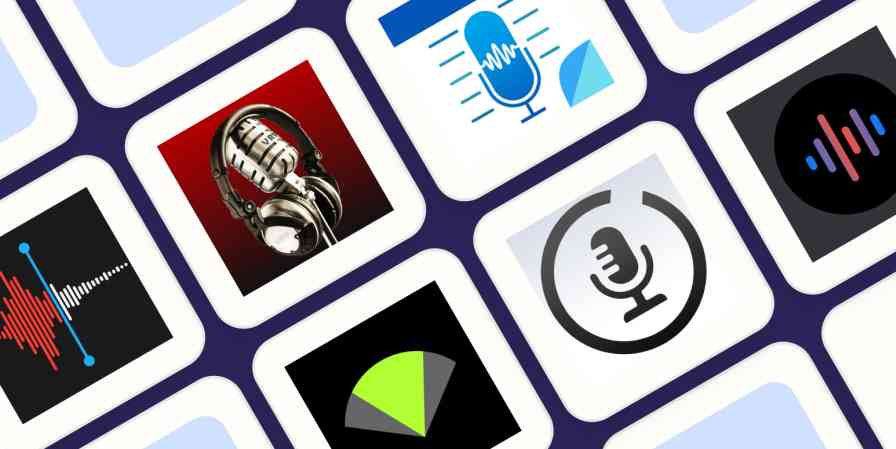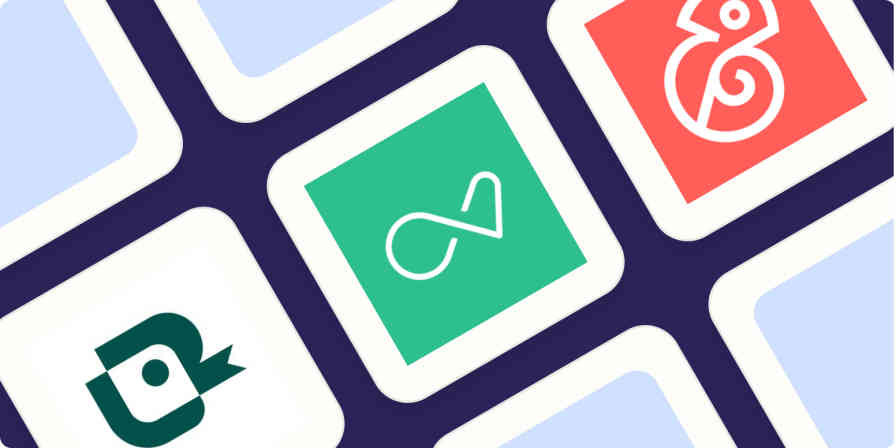If you're like me, you often find yourself feeling like there's not enough time in the day—and by often, I mean pretty much every day. When there's no time to waste and you have to nail down your priorities, adding structure and consistency becomes a necessity. That's where time blocking apps are an excellent way to manage your schedule: they force you to plan out every minute of your day.
Some time blocking apps work better for people who are more visual, while others are better for those who need more organization. Some apps are geared towards solopreneurs and freelancers, while others are designed for folks who work as part of a corporate team. That's why I spent several days testing more than 20 time blocking apps—to figure out which ones were the best for which people.
Whatever your reason for time blocking, one of the time blocking calendars here should speak to you and your needs.
The 7 best time blocking apps
Sunsama for daily planning
TickTick Premium for scheduling tasks
Sorted^3 for Apple users (and hyper-scheduling)
SkedPal for automated scheduling
Toggl Track for agencies and client work
Clockwise for teams
Planyway for Trello and Jira users
What is time blocking?
Time blocking is a time management technique where you schedule how you'll spend your time during every minute of every day. Each task you need to complete gets time scheduled on your calendar, so you can make sure you have the bandwidth for every to-do list item.
Most people's work calendars look like this:
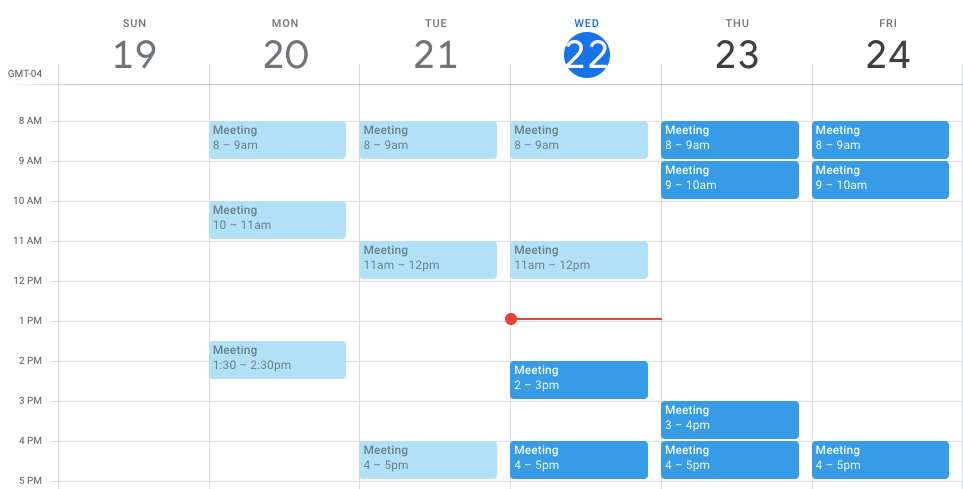
Your meetings are there, and the rest of your time is just assumed to be open. A time blocked calendar, meanwhile, fills in all of those gaps:
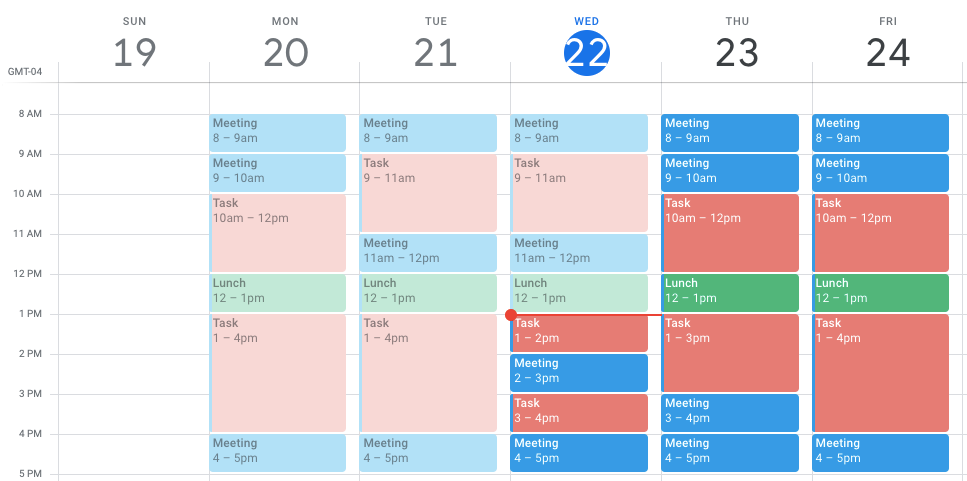
Time blocking as a time management technique was popularized by Cal Newport, author of Deep Work. Newport says he dedicates 10-20 minutes every evening to time blocking his schedule for the next day, but when you choose to block your time and create your schedule depends on what works best for you. You might create your schedule every day when you get to work, at the end of every work day for the next day, or at the beginning of each week for the rest of the week.
Additionally, you can approach the time blocking method in a couple of different ways. You might schedule time blocks for specific tasks around your meetings and other commitments, or you might choose to schedule time specifically for meetings and other commitments.
For example, instead of accepting meeting invites for whenever people send them, you may block off Monday, Wednesday, and Friday for working on tasks and leave Tuesday and Thursday open for people to schedule meetings. Then, you can break those big sections for Monday, Wednesday, and Friday down into specific tasks—daily or weekly, based on your priorities.
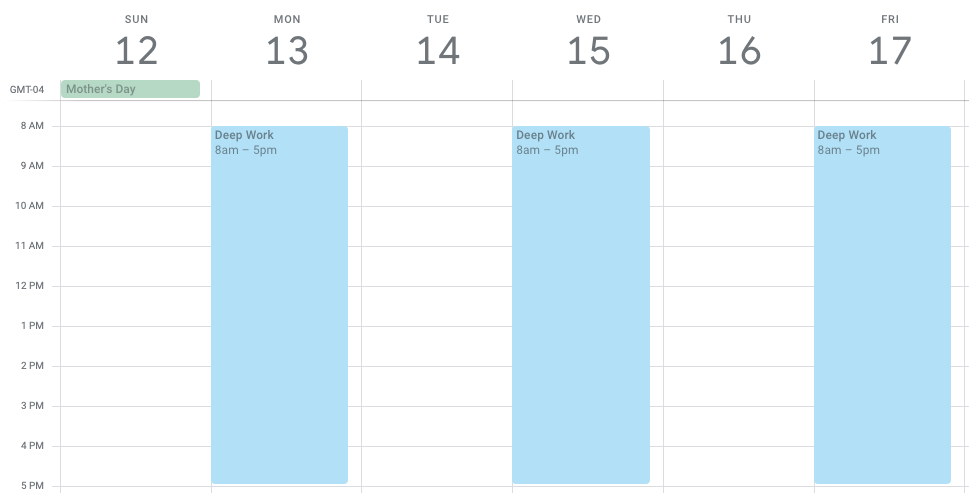
Scheduling time for tasks forces you to think about how long each task is going to take you to complete, which, over time, can help you form more realistic estimates.
What makes a great time blocking app?
How we evaluate and test apps
Our best apps roundups are written by humans who've spent much of their careers using, testing, and writing about software. Unless explicitly stated, we spend dozens of hours researching and testing apps, using each app as it's intended to be used and evaluating it against the criteria we set for the category. We're never paid for placement in our articles from any app or for links to any site—we value the trust readers put in us to offer authentic evaluations of the categories and apps we review. For more details on our process, read the full rundown of how we select apps to feature on the Zapier blog.
You could just use your calendar app to time block your schedule, or even a sheet of paper, but dedicated time blocking tools make the process a lot easier. Here are the criteria I used to determine the best time blocking software:
Integration with your current calendar. Being able to sync a calendar with a time blocking planner saves time and helps keep schedules error-free, so this is a must-have.
Ease of use. Some apps are just downright hard to figure out, so it was essential that my picks had a simple, intuitive interface that was easy to navigate.
Calendar and tasks in one place. No one wants to deal with having their projects and to-dos scattered in too many places. The purpose of a time-blocking app should be to simplify, which means being able to find and review your tasks in a central place, whether that's through native features or via integration with your project management and/or to-do list app.
Customization. While the ability to customize features like colors, themes, lists, alerts, and notifications is of varying importance, I chose apps that I felt provided enough flexibility to fit most people's day-to-day needs.
Integration with other tools. Integrating your time block planner with your calendar is just the standard, but integration with other apps and tools is a wonderful cherry on top.
Taking these criteria into account, I considered 27 different apps and ran the top 20 through a testing protocol that covered:
Signing up for an account and walking through any guided onboarding
Syncing my Google Calendar account
Blocking time for tasks, meetings, and events
Testing out calendar views and drag-and-drop functionality
Customizing settings for focus time, working hours, buffer time, etc.
Adding organizational projects, lists, tags, and color coding
Testing advanced features like automated scheduling, team features, and billable time, where available
One thing I didn't take into account: the core category of the app. There are dedicated time blocking apps, and then there's a whole ecosystem of adjacent project and task managers, to-do list apps, calendar apps, time trackers, and more that also offer time blocking in one way or another. For my purposes here, I looked for apps that make time blocking feel easy, regardless of the core category of the app. And the picks below were the best time blockers I found.
The best time blocking apps at a glance
Best for | Standout feature | Pricing | |
|---|---|---|---|
Daily planning | Intuitive interface and integration with project managers | From $20/month | |
Scheduling tasks | Built-in Pomodoro timer | Free plan available without a calendar view; from $2.79/month | |
Apple users and hyper-scheduling | iCloud sync | Free; PRO versions are $14.99 - $35.99 | |
Automated scheduling | Customization options | From $14.95/month | |
Agencies and client work | Billable rates and detailed reporting | Free plan available; from $9/user/month | |
Teams | Granular controls across teams | Free plan available; from $6.75/user/month | |
Trello or Jira users | Seamless two-way integrations with Trello and Jira | Free plan available; from $4/user/month |
Best time blocking app for daily planning
Sunsama (Web, macOS, iOS, Android)

Sunsama pros:
Simple, intuitive interface
Seamless integration with popular project managers
Prompts to help you plan
Sunsama cons:
No free plan
Sunsama is by far the best-designed app on this list. The app wastes no space, and after setting it up, you'll immediately understand how to use it. There's a task list, sorted by date, and there's a sidebar with a calendar. You can flip this around if you want, but either way, it's quick to drag tasks over to your calendar, making it convenient to jot down all your duties for the day and then focus on planning them all out accordingly.
Another neat feature is the ability to properly categorize all your tasks. Most time blocking apps have some kind of tagging aspect, but Sunsama takes it a little further with what they call contexts and channels. Contexts are essentially overarching categories, like Work or Personal. Within those categories, you can create sub-categorizations, like Focus Time, Creative Time, or Family Time to further drill down the organization of tasks.
Where Sunsuma really stands out is how it helps you plan out your day. Sign on in the morning, and you'll be asked which tasks you have to work on, how long you think they are, and when you want to do them all. It really makes the process of blocking your day painless, and there's even support for sending a summary of your plan for the day over to Slack in a single click. When nearing the end of your day, Sunsama will prompt you to jot down what you finished that day and what you didn't get to, which I found a nice way to regroup before logging off.
The app is full of little touches like this, and the result is that time blocking your daily to-do list feels easier here than in any app we tested. And integrations with Trello, Gmail, GitHub, and Jira mean you can drag tasks over from a variety of apps. Google and Outlook calendars are both supported. The main downside: there's no free plan.
Sunsama pricing: Starts at $20/month (or $16/month if you buy an annual plan). No free version, though there is a 14-day free trial.
Best time blocking app for scheduling tasks
TickTick Premium (Web, Android, iOS, macOS, Windows, Chrome, Firefox, watchOS)

TickTick pros:
Built-in Pomodoro timer
Unique options like the Eisenhower matrix
Cons:
Not the best for calendar syncing
TickTick Premium lets you compile your tasks in a to-do list and then block time for those tasks on your calendar. But TickTick offers a feature that the others don't: a Pomodoro timer. So if you want to combine time blocking with the Pomodoro Technique—or if you're looking for the best task management app with built-in time blocking—TickTick Premium may be the best option for you.
Adding tasks to your calendar in TickTick isn't as simple as it is in some of the other apps. Instead of dragging and dropping tasks onto your calendar, you have to take a few steps. While adding a task, you can use natural language processing to add a due date—for example, you could type "walk the dog tomorrow." Do that, and your task will have a due date set for tomorrow. If you forget, that's ok: you can edit a task and select a due date. It will then show up on your calendar as an all-day event—you can drag it to whatever time you want.
TickTick can also pull events from your existing calendar and display them on your TickTick calendar; or you can set it up to push TickTick events to your main calendar. You can't manage calendar appointments in TickTick, though—the appointments from your calendar are basically only there for reference. But it's enough to plan your day.
Another neat feature to take advantage of is the Eisenhower Matrix. The name may sound a little intimidating, but it's actually very simple. You can use the matrix to organize your tasks according to Urgent & Important, Urgent & Unimportant, Not Urgent & Important, and Not Urgent & Unimportant. This system essentially provides a way to properly prioritize and tag your tasks with a simple drag and drop. As someone who can get overwhelmed with the number of tasks on my plate, being able to see a visual representation of my tasks prioritized was a huge help.
You can integrate TickTick with thousands of apps using Zapier's TickTick integrations. This is great for adding tasks to your calendar or pulling in tasks from other apps like Gmail or Slack. Discover the top ways to automate TickTick, or get started with one of these pre-made workflows.
Add detailed events in Google Calendar for new tasks created in TickTick
Create TickTick tasks from new saved Slack messages
TickTick pricing: The free TickTick product doesn't include a calendar view; from $2.79/month for TickTick Premium that includes the calendar view and RSS feeds to and from third-party calendars.
Best free time blocking app for Apple users (and hyper-scheduling)
Sorted^3 (iOS, macOS)
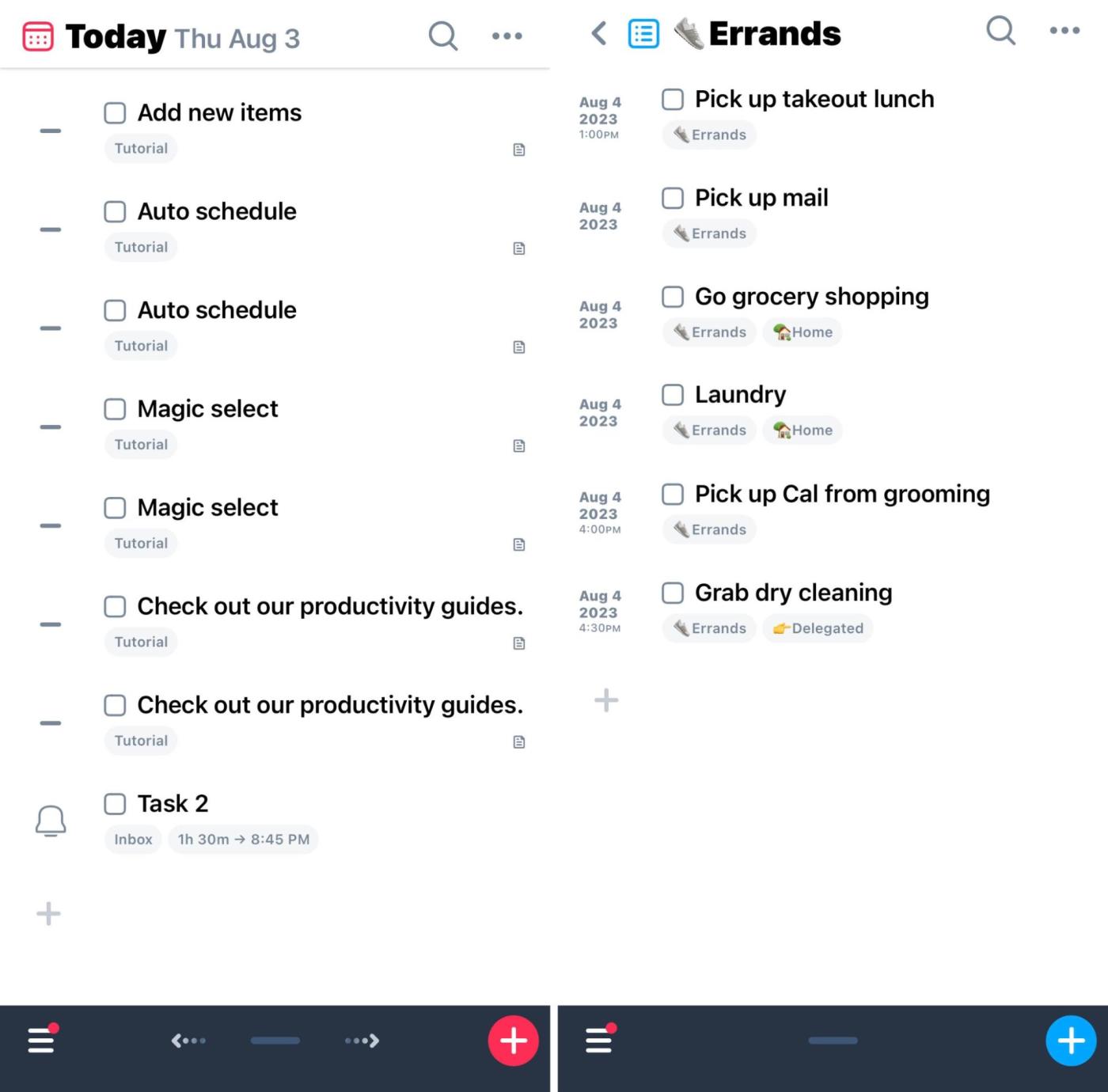
Sorted pros:
Syncs across Apple devices
Capable auto-scheduling
Sorted cons:
Not available for Android or Windows
Less calendar-focused than most
Sorted^3 is the self-proclaimed app for hyper-schedulers—and as someone who self-identifies that way, I'd absolutely agree.
Sorted^3 has an excellent onboarding flow. When you sign up, you'll be immediately directed to a tutorial showing you how to use app shortcuts and other unique features, like Magic Select (more on that in a bit). While the amount of information may seem overwhelming at first, it does a superb job of guiding you through all the features that are available to you as you start using them.
On the hyper-categorization front, there's a tab for lists that has sections for errands, notes, links, and groceries, so you can put any tasks or information that you want to store for later—but you can also schedule out any tasks from the lists as well.
Back to Magic Select. This feature lets you quickly highlight multiple items in your schedule. This means you can delete, recategorize, retag, or reschedule multiple tasks without too much effort. Surprisingly, out of all the other apps I tested, none had this feature.
You'll also get an auto-scheduling feature. You can add all your tasks to the schedule section, assign a certain period of time for each one, and then let Sorted^3 do the heavy lifting of blocking out time for all your tasks. You can even add an automatic buffer period between tasks, and you're able to move things around after they've been scheduled.
Sorted^3 also has some nice Apple-specific features. For example, you can sync to iCloud to access your schedule on all your Apple devices and take advantage of Siri to plan out tasks.
Sorted^3 pricing: Free; PRO version is $14.99 for the iOS app, $24.99 for the macOS app, or $35.99 to bundle both.
Best time blocking app for automated scheduling
SkedPal (Web, iOS, Android)

SkedPal pros:
Tons of customization and controls
Powerful, flexible automatic scheduling
SkedPal cons:
Schedule must be updated manually
Bit of a learning curve
If you need help fitting all your tasks into the day, SkedPal is your app.
Focused on tasks and to-dos, SkedPal offers a number of ways to view and conceptualize all the tasks on your list. You can brain-dump to-dos into the inbox without scheduling, see an overview list of tasks for today or for the upcoming week, or organize your work on a Kanban-esque board.
When you add a task, the app uses natural language processing (NLP) to recognize durations and dates as you type—for example, typing "deep work 2 hours tomorrow" will add two hours of deep work to your calendar for tomorrow. Or click on the three dots to the left of any task to plan and add it to your calendar.
You'll see all your tasks and events automatically blocked off in the Calendar tab in the left-hand menu. Drag and drop blocks to move or alter the duration. Skedpal offers two-way (read and write) integration with Google, Office, Exchange, and iCloud calendars to help avoid overbooking and schedule conflicts.
Of all the apps I tested, SkedPal was by far the most customizable, allowing you to create granular recurring schedules, set minimum block lengths, add custom buffers before and after blocks, and more. You can also build your own Time Maps to customize the timeframe for "afternoons," "working hours," "weekdays," etc.
With all that customizability, SkedPal does come with a bit of a learning curve—but the app offers a super helpful onboarding sequence and keyboard shortcuts to speed up task creation and scheduling. Plus, you can do more with SkedPal when you connect it with Zapier to automate adding new tasks, connecting with your project or task manager of choice, and more.
Save new completed SkedPal tasks to Google Sheets as rows
SkedPal pricing: 14-day free trial, then $14.95/month when paying monthly or $9.95/month for the annual plan
Read more: SkedPal vs. Motion
Best time blocking app for agencies and client work
Toggl Track (Web, iOS, Android, macOS, Windows)

Toggl Track pros:
User-friendly interface
Built-in time tracking and billable rates
Detailed reporting
Toggl Track cons:
Upgrade required to access billable rates feature
Toggl Track is first and foremost a time tracking and client billing platform. The time tracker is front and center, and when you create a block, it asks, "What have you done?" With that said, you can use Toggl Track to block time and plan ahead, too. And when the time comes, tracking your time is as easy as hitting play on the appropriate block.
The app has my favorite interface with a clean calendar view and straightforward menu on the left to view reports, and manage projects, clients, and billable rates. Click and drag anywhere on the weekly view to add a new time block. Here, Toggl perfectly balances speed with specificity—you can quickly add generic time blocks or create specific tasks by selecting the client/project, adding tags, and marking the task as billable (or not).
Under Billable Rates in the left-hand menu, you can set a default billable rate for all work or set varying rates by team member or project (though you will have to upgrade to set billable rates). At the end of the week or month, head to Reports to see a breakdown of billable and nonbillable time across team members, clients, projects, and individual tasks. Click down to Insights to see detailed graphs on project and employee profitability.
As your team grows, Toggl offers another product—called Toggl Plan—to help with team scheduling and project planning at scale. And you can do even more with Toggl Track when you connect it with Zapier. Learn more about how to automate Toggl Track, or get started with one of these pre-made workflows.
Create detailed Google Calendar events for new Toggl Track time entries
Create Google Sheets rows for every new time entry in Toggl Track
Create new Notion database items from new Toggl Track time entries
Toggl Track pricing: Free plan includes unlimited time tracking, projects, and clients for up to 5 users; upgrade to the Starter plan at $9/user/month to access billable rates, expanded task management, project templates, and more.
Best time blocking app for teams
Clockwise (Chrome, Firefox, Asana, Slack)
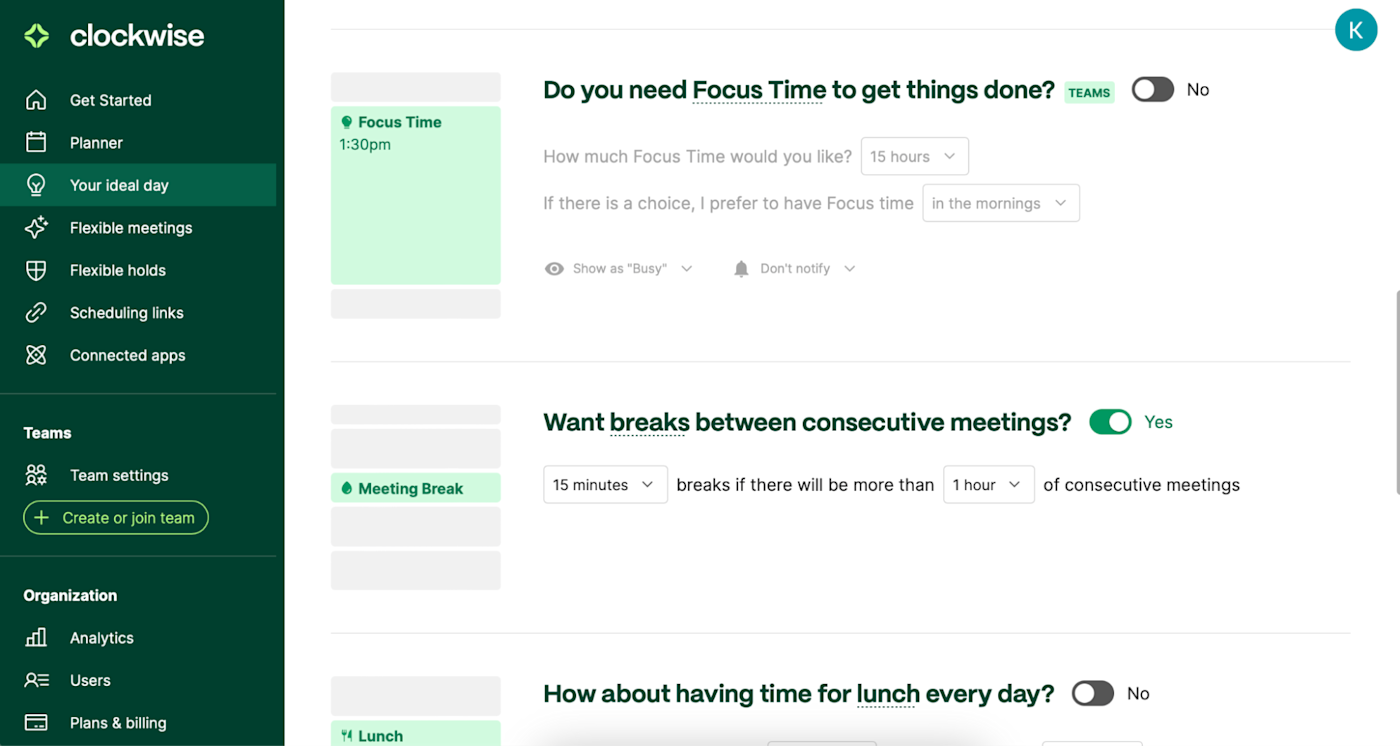
Clockwise pros:
Built for teams
Granular controls over your ideal day
Clean calendar view
Clockwise cons:
Must have a business email to sign up
Only connects with Google Calendars
If you've ever struggled to carve out time for deep work amid a sea of team meetings, Clockwise can help. When used alongside the rest of your team, Clockwise helps every team member schedule flexible meetings for the best time for all and helps everyone maximize their focus time.
The Planner is your typical calendar view. While you can't just click and drag to add a time block like most of the apps on our list, adding a new meeting only takes a few extra clicks. Head to Your ideal day to the left to customize everything from your working hours and meeting availability to how much focus time you need and when you prefer to schedule it. You can add time for lunch or include travel time, too.
Clockwise really shines when you get to flexible meetings and holds. You can mark any meeting in your calendar as flexible, and Clockwise will automatically choose the best time for all parties. (Weekly one-on-one meetings are a great use case for this.) Under Flexible holds, you can utilize the same smart scheduling for events where you're the only participant.
The app also offers a Calendly-esque scheduling link feature. One drawback: Clockwise only integrates with Google Calendar accounts for now. But the app also integrates with Zoom, Asana, and Slack.
Clockwise pricing: Free plan includes smart calendar management for individuals; upgrade to the Teams plan for $6.75/user/month to optimize meeting times and focus time for multiple parties.
Reclaim is another great option for smart scheduling across a team. I found Clockwise a shade easier to use, but if you prefer a tool with more task management features, Reclaim is worth a try and also offers a limited free plan.
Best time blocking app for Trello or Jira users
Planyway (Chrome, Safari, Opera)
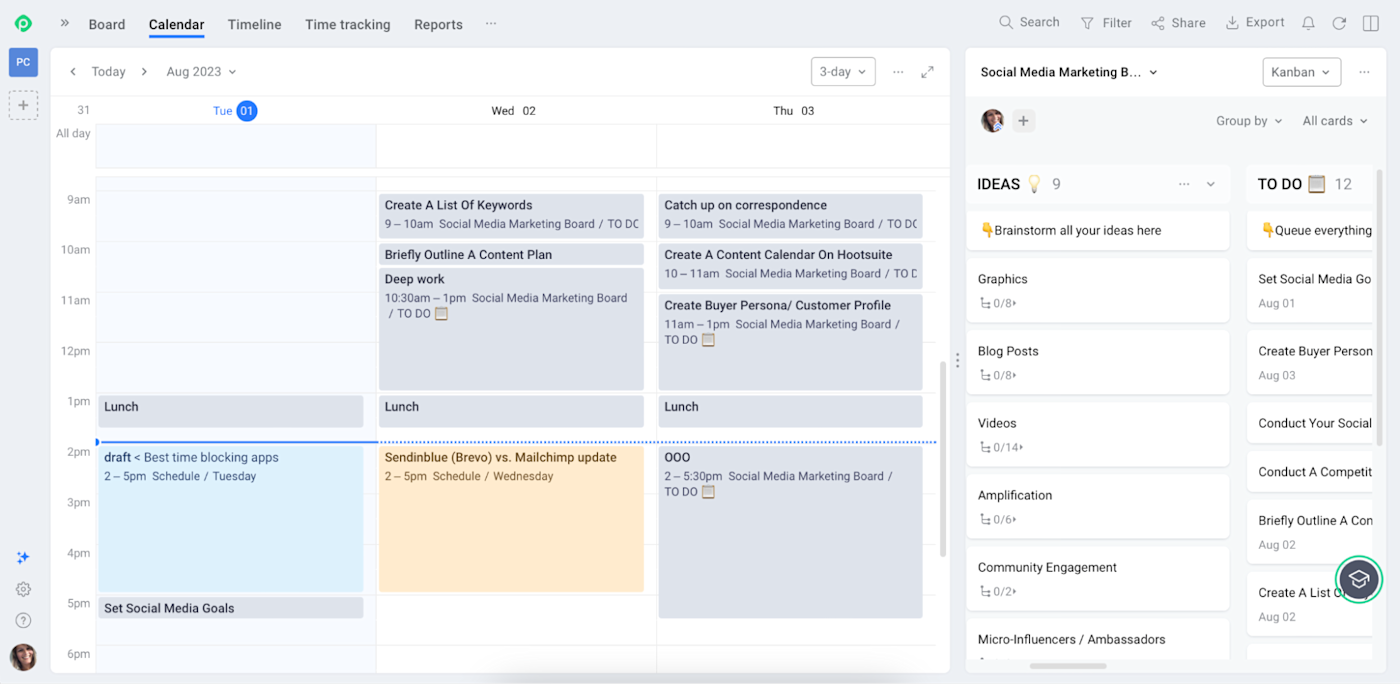
Planyway pros:
Seamless two-way Trello and Jira integrations
Time tracking features
Planyway cons:
Free plan only includes one-way calendar sync
Only works with Trello and Jira
If you use Trello or Jira as your to-do list or project management tool, Planyway lets you block time on your calendar using those tasks.
You can easily create and place all your tasks into your pre-created Trello lists (or create new lists within Planyway), and then just drag and drop them onto the Planyway calendar. Connect your existing calendar, and you'll see those same tasks or events with the rest of your schedule. The app did take a bit of time to think about integrating with my Google Calendar, but after a few refreshes, it wound up working just fine.
Planyway also gives you the option to connect it to your Google, Outlook, or Apple calendar, so you can see your calendar appointments in context. On its Free plan, Planyway supports one-way syncing: you can see your Planyway cards in your calendar using an iCal URL, but you can't see your calendar events in Planyway. Two-way syncing that keeps both calendars in sync is available on the Business plan.
Planyway pricing: The Free plan includes one-way calendar syncing and basic features; from $4/user/month for the Business plan that includes two-way calendar syncing, additional view options, and recurring cards.
Do you need a time block app?
You might decide that you don't need a dedicated app for time blocking, and that's fine. Here are some other ideas:
I included TickTick in the list above, but some of the other best to-do list apps also have basic time blocking features, including Any.do and Todoist.
Honestly, any of the best calendar apps could work for calendar blocking. Just add your tasks as calendar appointments.
Serene is a distraction blocking app that also works great for planning your day. It's not exactly a time blocking app, but might be better for some people.
AI scheduling assistants basically function as time blocking apps, so take a look at the best AI scheduling apps (one of them made this list).
Each app offers a free plan or free trial, so you can try them all and pick the one that works best for you.
Related reading:
This article was originally published in June 2019 by Jessica Greene and has also had contributions from Justin Pot and Kristina Lauren. The most recent update was in August 2023.

